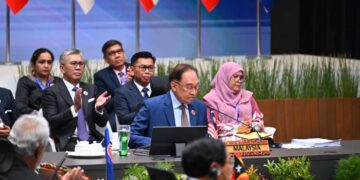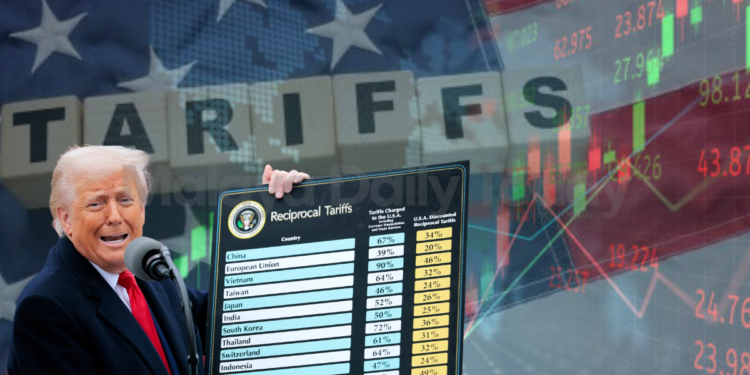KUALA LUMPUR – Donald Trump has signalled that his controversial 145% tariff on Chinese goods could be lowered “substantially”, though he insisted it “won’t be zero”, a move that may ease, but not eliminate fears of prolonged trade disruption, The Guardian reported.
Speaking at a White House press conference, Trump’s comments followed remarks by U.S. Treasury Secretary Scott Bessent, who had earlier described the current tariff levels as “unsustainable” and suggested a “de-escalation” of the trade war between the world’s two largest economies.
Despite this, the former president maintained a confident tone, declaring, “We’re doing fine with China,” and hinting at a softer stance toward Chinese President Xi Jinping, even as tariffs remain firmly in place.
A Market Rattled, But Not Broken
Global investors reacted positively to the potential thaw, with the S&P 500 rising 2.5% following Bessent’s comments. However, the underlying uncertainties persist, particularly for export-dependent nations such as Malaysia, which counts both the U.S. and China as critical trading partners.
“The current tit-for-tat tariff regime, where the U.S. levies 145% on Chinese imports and China retaliates with 125% on U.S. goods, creates a fragile environment for Malaysian businesses operating within integrated global supply chains,” said an economist from a local think tank.
Malaysian manufacturers, particularly those involved in electronics, semiconductors, and precision machinery, have been navigating a volatile landscape since Trump’s return to office, with fluctuating costs and disrupted shipping routes.
No Clear Resolution, Just a Pause
While Trump announced a 90-day pause on broader global tariffs, China was notably excluded. Beijing has been unwavering in its criticism of Washington’s trade actions, with state-run media branding Trump’s approach as “populist protectionism” that undermines global commerce.
The trade war has spilled over into third-party markets. Reports from South Korea suggest China is warning foreign firms, particularly those tied to U.S. military contractors, not to use Chinese-sourced critical minerals, further heightening concerns over the politicisation of trade.
For Malaysia, this adds pressure to maintain a delicate balance in foreign policy and economic planning. While the country seeks deeper ties with both superpowers, a fractured global trade framework could hurt export earnings, weaken investor sentiment, and delay recovery in key sectors post-pandemic.
Looking Ahead: Opportunities Amid Risks?
Despite the chaos, White House press secretary Karoline Leavitt claimed the Trump administration has received 18 trade proposals from other countries seeking bilateral deals with the U.S. Though details remain scarce, Malaysia will be closely monitoring these developments for opportunities to protect and expand its trade footprint.
Meanwhile, uncertainty also looms in U.S. domestic policy. Trump’s vocal demands for the Federal Reserve to lower interest rates and vague threats to remove Fed Chair Jerome Powell have created additional market jitters, further complicating the outlook for global trade and investment flows.
As Malaysia charts its economic future, policymakers and industry leaders will need to stay nimble, ready to pivot, negotiate, and adapt amid a shifting global order where trade, diplomacy, and geopolitics are more tightly intertwined than ever before. -MalayaDailyToday




































































